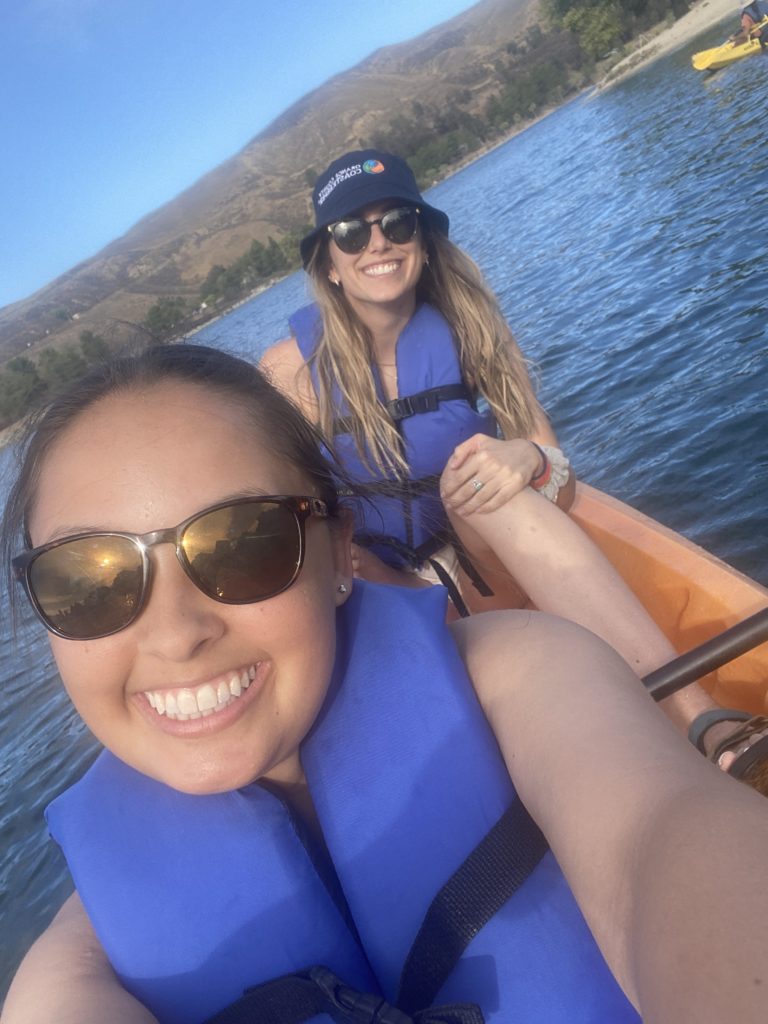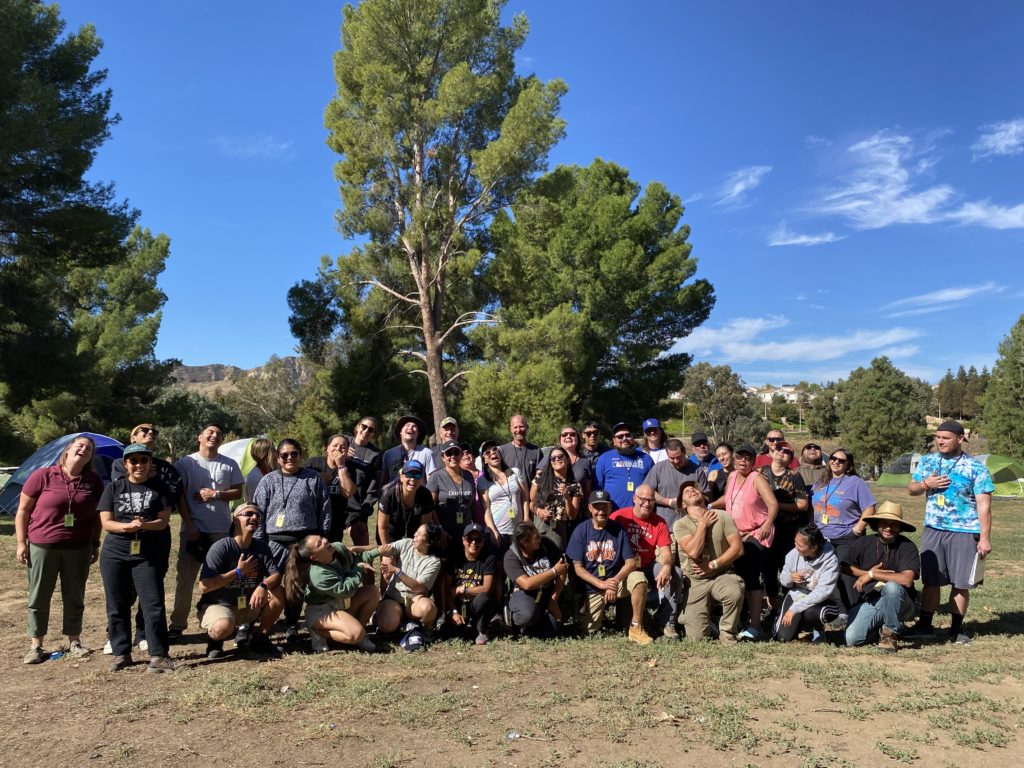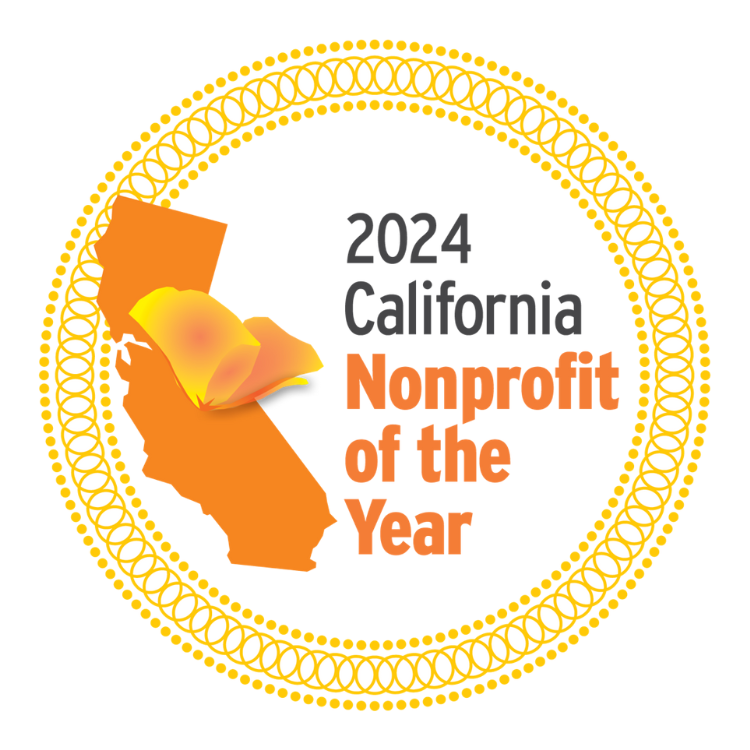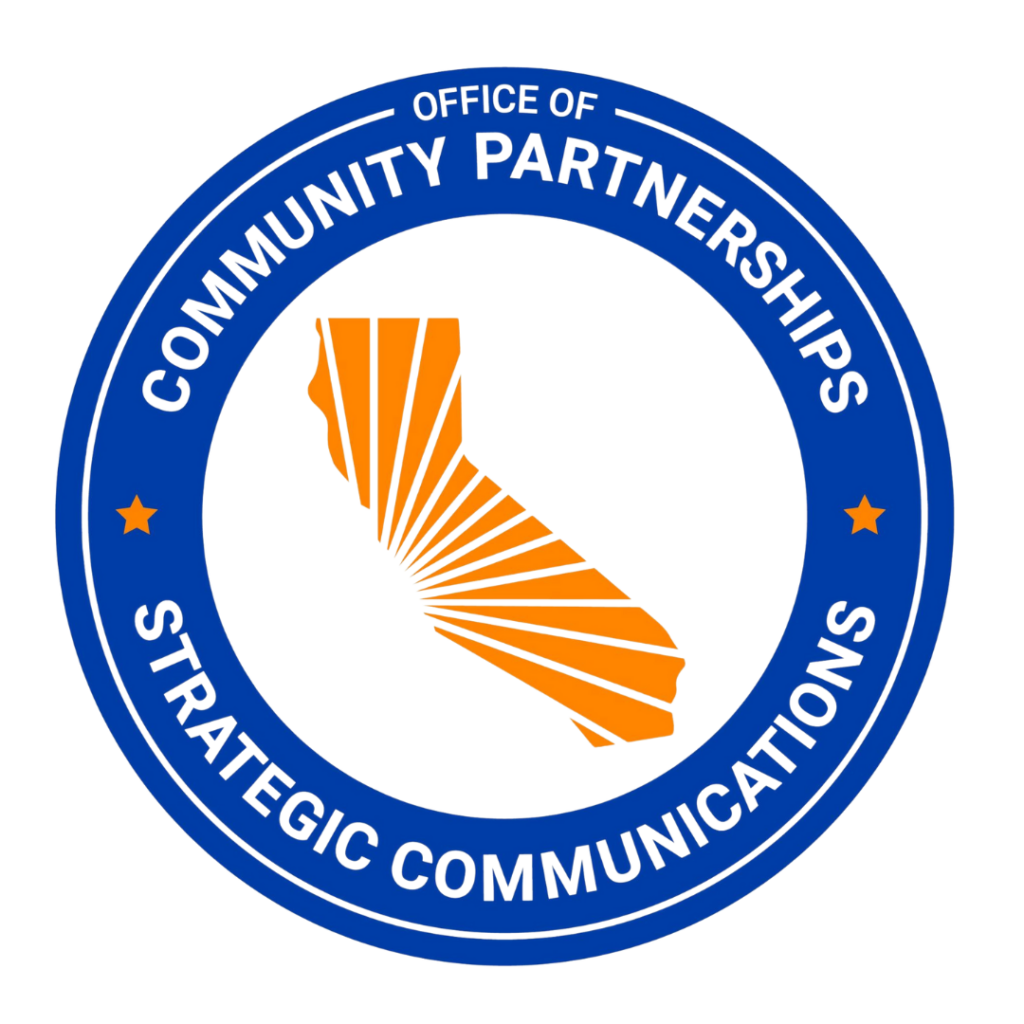by Michaela Coats, Education Director at OC Coastkeeper
“Close your eyes. Think back to a foundational moment that sparked your relationship with nature. Where are you? What do you see? Hear? Smell? How do you feel?”
These were the reflective questions that kicked off a three-day outdoor recreation leadership training hosted by California State Parks. Coastkeeper’s education team (Genesee and myself) were invited as recipients of the agency’s Outdoor Equity Grant (OEG) program, which we were awarded to provide our WHALES program to a high school in Garden Grove.
The purpose of the training was to equip participants with the skills and experience needed to comfortably take members of their own community to have outdoor experiences, such as hiking or camping.

While the overarching goal of the OEG is to expand access to nature, the programs being supported by this grant take advantage of the benefits those experiences provide and empower their communities. Spending time in nature has a plethora of benefits on one’s physical, mental, and emotional health; research continues to be released to support these claims (Pearson and Craig 2014, Thompson et al. 2012, Beyer et al. 2014).
In the highly urbanized region of Orange County, this means actively seeking out natural spaces to reap these benefits, and yet many communities face inequitable access to green spaces. This notion has inspired grassroots communities and governmental agencies alike to begin prioritizing access to nature, as well as opportunities for individuals to have meaningful, community-building experiences in these spaces.

Amongst us at the training were 30+ leaders from across California, all working in service of their communities. From social and environmental justice non-profits to city and agency representatives, each group’s programs represented the diversity of ways in which nature and the outdoors can be utilized as a tool for social change.
Amongst group activities aimed at developing leadership, communication, and team-building skills were intentional moments of self-reflection, camaraderie, and solidarity. It is amazing how quickly a group of 30 strangers became not just friendly but true friends – bonded by similar values of community and justice. By forming meaningful relationships that can grow into partnerships, we can increase the capacity to which we can provide for our communities. Even the simple sharing of advice or resources opens a door for which one can better understand and address their community’s needs.
One of the program facilitators had a common theme in the wise words he spoke to us:
“You are a part of a movement that recognizes the power and value of nature in empowering communities to fight for an equitable future.”
Choosing a career path that serves others is by no means easy. This lesson serves as a reminder of the importance of this work and instills hope that we can create a better future – but only if we do it together.
References
Beyer, K. M., Kaltenbach, A., Szabo, A., Bogar, S., Nieto, F. J., & Malecki, K. M. (2014). Exposure to neighborhood green space and mental health: evidence from the survey of the health of Wisconsin. International journal of environmental research and public health, 11(3), 3453-3472.
Pearson, D. G., & Craig, T. (2014). The great outdoors? Exploring the mental health benefits of natural environments. Frontiers in psychology, 5, 1178.
Thompson, C. W., Roe, J., Aspinall, P., Mitchell, R., Clow, A., & Miller, D. (2012). More green space is linked to less stress in deprived communities: Evidence from salivary cortisol patterns. Landscape and urban planning, 105(3), 221-229.






